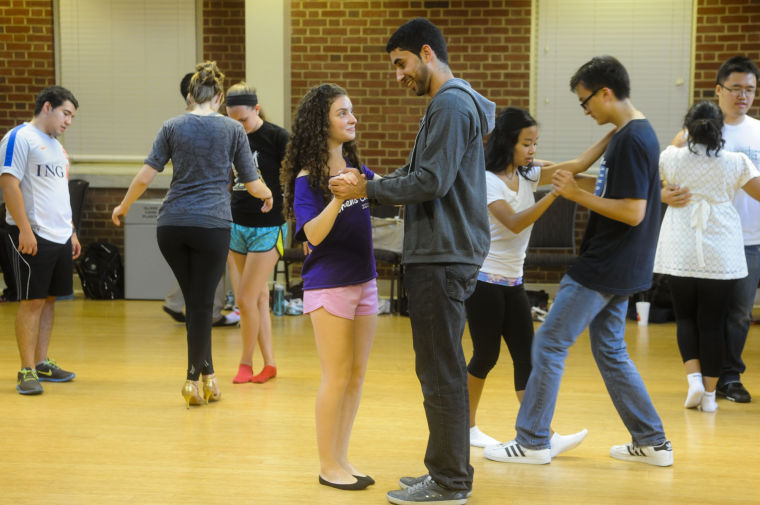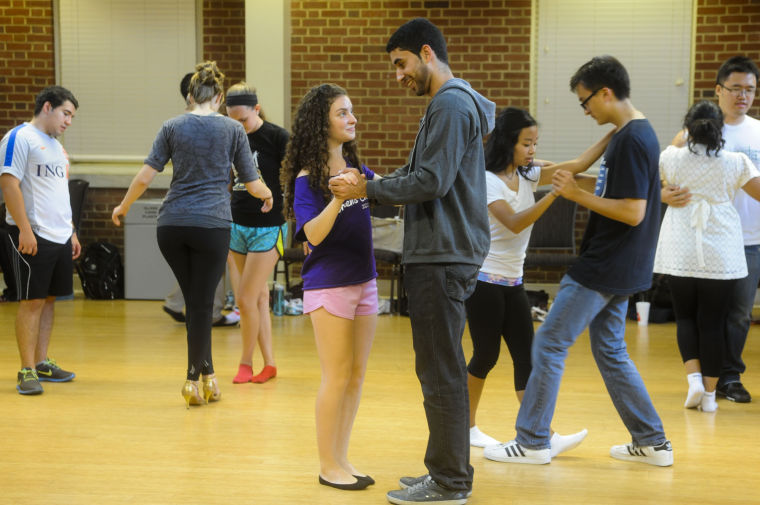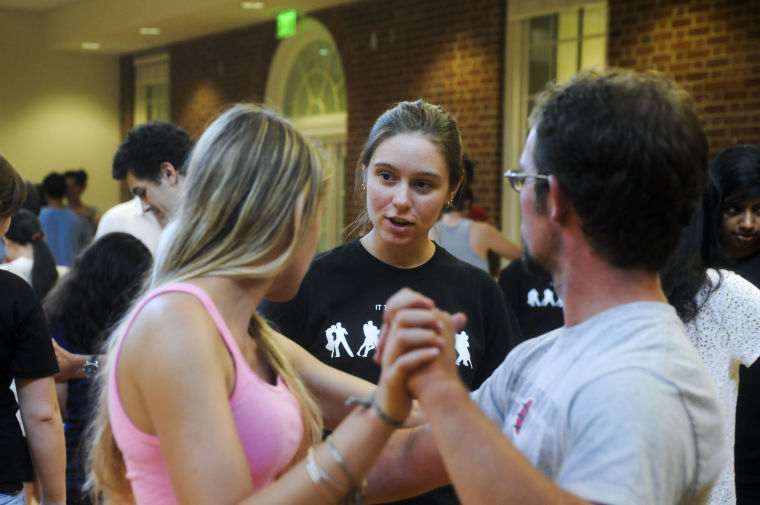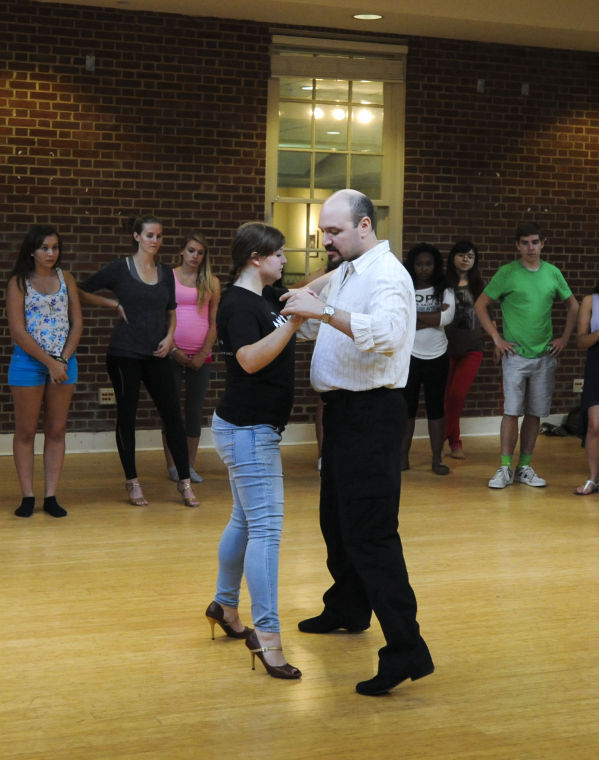Fiery music began to blare from a set of speakers in the Atrium Room in Stamp Student Union on Friday. The attendees of this university’s first Argentine Tango Club lesson of the school year knew it was their cue. So slowly, hesitantly, they started to dance.
Their feet were cautious, taking awkward steps this way and that. Partnered guys and girls leaned into unfamiliar motions. Some had never danced before.
But that was nothing new, said club president Liz Williams, a senior microbiology major. The tango club typically doesn’t see veteran dancers.
“Most people here hadn’t done it before — ever,” Williams said.
The Argentine Tango Club was founded in 2006 but saw its biggest first lesson turnout ever on Friday — more than 100 people showed up to dance.
David Chorvinsky, a junior mechanical engineering major who coordinated the club’s annual festival earlier this year, said the club has been growing; its previous attendance record was about 60 people at one lesson in the spring.
“Something good has happened,” he said, grinning, as couples danced around him.
The Atrium smelled like fresh wood. Club members — sporting black T-shirts that read “It takes you to tango” — rolled up the blinds on the windows just before the dance lesson. Cookies were laid out on the table.
Some new pairs picked it up more quickly than others.
“Try not to dance with furniture!” instructor Jake Spatz called to the crowd amid the chaos of movement and chatter. Spatz has taught at Eastern Market Tango in Washington since 2006. This is his fourth year teaching at the university’s tango club.
Tango dancing requires understanding three steps, Spatz instructed: a step to the side, a step forward and a step backward. He chanted the sequence several times throughout the lesson.
The mob oscillated in rhythm in a circle around Spatz, slithering up and back and up and back. He then told the participants to partner up.
“Every year, the club gets more enthusiastic and more friendly,” Spatz said.
Alex Chao, a freshman biology major, had never tangoed before.
“I’m not very coordinated,” he said. But he was determined to dance to “be more social” and “meet the ladies.” The male-to-female ratio was almost equal on Friday, and Chorvinsky said it is usually in good balance throughout the year.
Milly Gu, a sophomore accounting major, accompanied her friend Mojan Najmabadi, a sophomore enrolled in letters and sciences, to the lesson. Gu had never danced in her life.
“Tango is inherently sexy,” Gu said. “It’s very elegant — a different kind of recreational activity.”
I’d never tangoed before, except once, clumsily, in a musical when I was 14. William Weston-Dawkes, a club regular and a junior mechanical engineering major, showed me the steps.
The steps are easy enough and in their most basic form require just stepping and sliding in motion. But it’s not as easy as it looks. My performance wasn’t at all like the fluid tango the club members had done. The magnetism, passion and strength in tangoing come from trust between partners and hours of practice.
Halfway through the lesson, Spatz hovered by the speakers, watching the new dancers pick up the steps.
“I think this presents an opportunity to learn something that’s a real art form,” Spatz said. “It’s hard to find nowadays because all of our technology keeps us connected to each other.”
“With this, you have to physically show up, and you have to do the art with your body itself,” he continued. “It’s the kind of thing that’s a very disciplined dance, a very beautiful dance, a very unique experience for people when they make something beautiful with their own legs.”
The Argentine Tango Club offers lessons every Friday from 3 p.m. to 5 p.m. throughout the semester. Last Friday, the club saw its biggest turnout for its first lesson ever, drawing more than 100 students who wanted to learn to tango.
Junior fire protection engineering major Raquel Hakes serves as the vice president of the Argentine Tango Club and works with new and returning members to improve their steps.
Club president Liz Williams and instructor Jake Spatz demonstrate moves for eager students.






